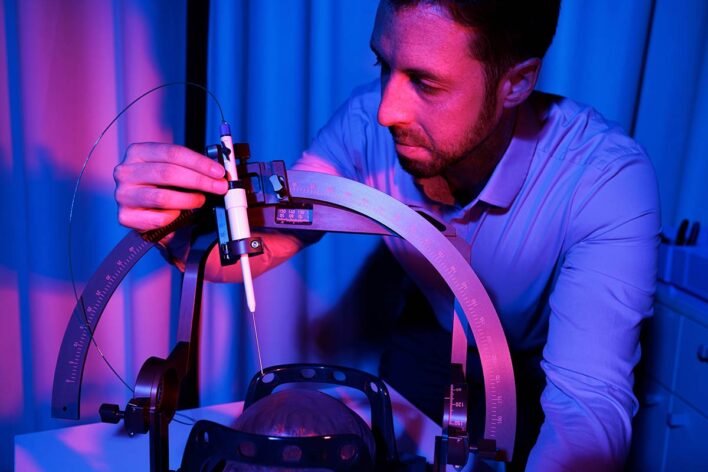News
Artiria Medical: A Swiss innovation pushing the boundaries of stroke treatment

Winner of the Best Start-up Award at the 2025 BioInnovation Day, Artiria Medical exemplifies the vitality of the Campus Biotech ecosystem. With its robotic neurovascular access technology, the company aims to revolutionize stroke care. Its CEO reflects on recent clinical milestones, the pivotal role of the Wyss Center, and the key challenges that remain to bring biomedical innovation from Switzerland to the global stage.
You have just been awarded the prize for best start-up at BioInnovation Day 2025 (BIND), held at Campus Biotech.
What does this recognition mean for you and for Artiria Medical, in the context of the Swiss healthcare innovation ecosystem?
This award is a major recognition of our work, as demonstrated by the recent announcement of our 50th clinical case in North America. It’s also an excellent springboard to support our fundraising, which we’ve just launched. Finally, this award has a special value for us: it comes from a local ecosystem, in recognition of a start-up active here, at the Campus Biotech.
Your technology is based on a robotic neurovascular access system designed to assist surgeons in the treatment of stroke.
Can you explain how your device represents a major technological advance in the field of neurointervention?
Today, the vast majority of stroke treatment procedures are still based on old devices, which have to be constantly removed from the patient and manually shaped to progress through the arteries.
Our technology enables all these operations to be carried out dynamically, in real time, inside the arteries themselves, thanks to a control handle that directly drives the tip of the device.
The aim is clear: to make stroke treatment both faster and simpler.
Artiria Medical’s mission is to respond to a critical unmet need in stroke management.
What concrete benefits can you bring to healthcare professionals and patients?
I can give you a very concrete example. During a recent intervention in France (under compassionate use), our device proved to be absolutely decisive: it enabled a complex arteriovenous malformation to be treated. Without it, the procedure would simply not have been possible.
In this type of case, the clinical impact is considerable.
As a company born out of the EPFL Innovation Park and working with the Wyss Center, you operate in a cutting-edge scientific ecosystem. What role has the Biotech Campus, and in particular this collaboration with the Wyss Center, played in the development of your technology?
The Biotech Campus is an ideal environment for Artiria: it brings together top-level expertise in translational neurotechnology and neuroscience (EPFL, University of Geneva, HUG, Wyss Center, etc.).
In particular, we are collaborating with the laboratory of Prof. Paolo Machi, a specialist in interventional neuroradiology at the HUG, with whom we conducted our first study on humans. This laboratory is located just two floors from our offices – a real asset!
The Wyss Center has been a driving force in our development. Thanks to a joint project supported by Innosuisse, we have been able to collaborate on several fronts – technological, regulatory, preclinical in vivo – and thus begin the clinical translation of our technology.
In your opinion, what levers need to be strengthened in Switzerland to facilitate the transition of biomedical innovation from the laboratory to clinical practice? And how can ecosystems like the Campus Biotech contribute more to this?
One of the key points is to encourage greater interaction between clinicians and engineers – this is where the most impactful innovations are born. We also need to invest in appropriate infrastructure, by offering start-ups accessible workspaces with flexible and affordable rental terms.
We also need to support the financing of start-ups in their growth phase. Too many promising companies, such as Artiria, find themselves forced to move abroad to raise significant amounts of money (from CHF 10 million).
Finally, we need to simplify the regulatory framework. The Swiss system, with its combination of local red tape and the complexity of European standards, has become a real brake.
As a result, more and more innovations are moving to the United States.
